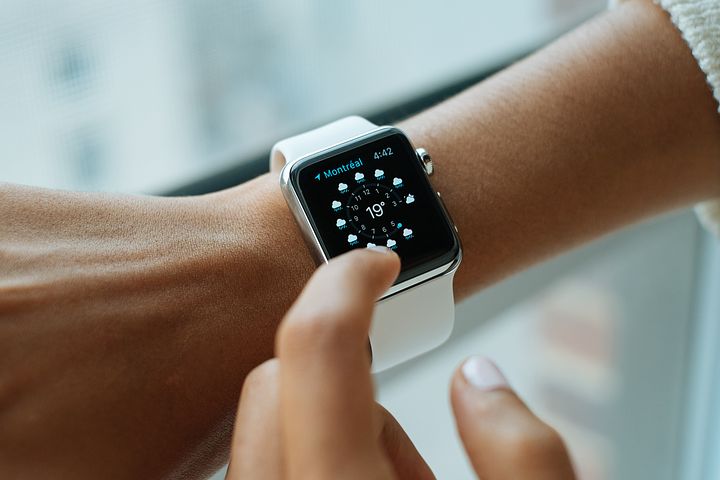Three steps to IoT adoption for health insurers

Simon Perry, insurance expert, GMC Software
Over the last couple of years, consumers have got on board with the Internet of Things (IoT) and wearable technology in a big way, says Simon Perry, insurance expert, GMC Software.
CCS Insight has estimated that in the UK alone there are approximately 10 million wearable devices in use, with the number set to triple over the next four years to almost 33 million units. According to PwC, wearable devices are popular with consumers as they promise to entertain, save money and ultimately help consumers lead healthier lives.
As a result, health insurance has been among the quickest of industries to recognise the value IoT could bring. Technology is completely transforming the way the industry works, with insurers such as Vitality and Oscar communicating with customers through apps and fitness trackers.
From an insurer’s point of view, the use of wearable technology will provide many benefits and opportunities, across the board. It helps them know their customers better, through improved data analytics and intelligence. It also gives them another way to keep in touch with their customers, and can also attract new customers who want to use the newest and best technology.
It also goes without saying, but with an increased focus on health and fitness and the technology to monitor it, insurers and customers will benefit from more accurate premiums and potentially reduced pay-outs. It’s certainly a popular move with customers: our own research found that more than half (56%) of consumers would like their insurer to use technology such as health monitors to provide a more accurate premium.
However, there are still ways in which adopting IoT and wearable technologies could go wrong. If customers aren’t encouraged to take up the technology, its value completely disappears. If the data produced isn’t used correctly, the insurer could make costly errors or even find itself in breach of compliance.
And if the insurer can’t communicate effectively with its customers, then the whole project could end up as a waste of time and resources. So how can health insurers keep pace with the future, making sure they are not left behind, while also ensuring they aren’t rushing into a mistake?
Map the lay of the land
The first thing to do is look at what the trailblasing insurers have done so far. By doing so, insurers can get an idea of the current lay of the land and build an understanding of what customer expectations might be. As mentioned before, the likes of Vitality and Oscar, who are already streets ahead when it comes to IoT and connected devices, are good examples to use.
Both offer customers fitness trackers with incentives for reaching fitness goals, such as Amazon vouchers and reduced insurance tariffs. Schemes like this encourage customers to keep active, reducing the risk of costly health problems while giving the insurer access to a wealth of customer data.
The early success of these initiatives has caused customer expectations to rocket. Some are demanding immediate access to real-time information and an outstanding customer experience at all times. For insurers to be able to meet this demand, they need to ensure that they are learning from what has been done before.
Insurers who do this can get a good understanding of what comes next, and what their customers will come to expect. It will also give insurers the chance to work out how they can differentiate themselves from the rest of the field.
Don’t make a mountain out of a mole hill
After learning the lessons of their competitors, many health insurers will be concerned about how the new technology might work alongside existing systems. Many healthcare providers are traditional, siloed organisations, running legacy systems which have not undergone major change for years. A complete rip-and-replace of legacy technology could cost thousands of pounds, as well as the lengthy time needed to implement a brand-new system. Instead, businesses need to focus on working out how they can share data across the entire company, seamlessly.
For an insurer to successfully weave wearable devices into its business model, it needs to ensure that the right data is being sent to the right department and that the device is interoperable across the entire company. To do this, insurers must look to technology which serves as an add-on to existing systems – rather than replacing it all together. This type of approach will unify legacy data and content, making it far easier for the insurer to make sense of the large amount of customer data it now has access to.
Communicate with your customer
For IoT to work, insurers need to tell their customers about the benefits of wearing a device. A failure to do so will mean customers lose interest and devices being left at home. For example, if a customer is wearing a fitness tracker to determine their premium every month, the insurer needs to be able to communicate exactly how the premium is changing every month, why, and what behaviour the customer can change to influence this: all using the customer’s preferred method of contact.
Without this level of communication, consumers are unlikely to keep donning their wearables: making the devices redundant and removing any benefit there could have been for both the insurer and customer.
This is becoming more and more important as consumer expectations are constantly on the rise. In practice with IoT, it’s important to factor this into your approach in the form of communicating clearly what it means for customers. Health insurers really need to understand the importance of getting it right first time, otherwise they simply run the risk of wasting large amounts of failed investment and resources, whilst losing out to competitors; when instead they should be adopting IoT as a way of attracting brand new customers.
Being confident in your ability to adopt IoT
Once insurers have got their ducks in a row, having assessed how other health insurers have adopted IoT and wearable technology; they will be in a better position to understand what the customer wants.
When it comes to putting these new ideas in to action, a health insurer must implement a system which serves as an add-on to its existing systems, so that legacy IT does not become an issue to overcome. Lastly, insurers need to communicate with their customer at every step of the journey; educating them on the benefits of wearable devices and their progress.
Failing to do this makes the other steps redundant, as consumers will lose interest and stop using the device all together. IoT is a leap towards the unknown, but by taking the time to lay firm foundations, health insurers can make confident strides forward.
The author of this blog is Simon Perry, insurance expert, GMC Software
Comment on this article below or via Twitter @IoTGN
